Tools
Conference Presentations
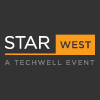 |
Automation and Test Strategies to Save Our Project from the Brink of Collapse
Slideshow
Teams are sometimes asked to turn a mess of undocumented, poorly structured legacy code into a robust product under impossible deadlines. Test strategies blending automation, exploration, and refactoring can help focus development efforts and converge even the most chaotic projects. But, where do you start? Join Jonathan Solórzano-Hamilton as he shows how automation can help drive products into a state of release readiness. Learn how refactoring, test-driven development, SOLID principles, dependency injection, and mocking frameworks help break down complex development problems into actionable chunks to delivering reliable, self-documented, and high-performing products. Jonathan walks you through the concepts of “Single responsibility”, “Open/closed”, “Liskov substitution”, “Interface Segregation”, and “Dependency Inversion”. |
Jonathan Solórzano-Hamilton
|
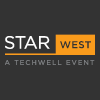 |
Frontend Testing: Stepping in and Collaborating with Developers
Slideshow
Testing is shifting left, moving closer to testing the code itself before the full product is ready for release. While the backend world already has established methodologies for testing, frontend developers and testers are still trying to figure out how to work together to effectively test the code. Gil Tayar suggests testers need to communicate with the frontend developers to understand the framework by which frontend code is tested, the various kinds of testing that can be performed on frontend code, and which tools can be used. During this session, Gil helps ease your fear of the unknown by teaching you how to test developer code. He discusses various test methodologies you can use and how they fit together in a coherent way. Gil also includes sample code that you can use as a template in your own project. If time permits, we'll get hands on and do a bit of live coding. |
Gil Tayar
|
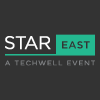 |
Elegant Test Weapons for a More Civilized Age
Slideshow
Software Engineering as a discipline is always evolving. The technologies and tools that were in vogue yesterday are passé today and gone altogether tomorrow. Despite this high churn, there are a number of skills that software testers, in particular, possess that are eternally useful. They cut across time and tools and even job titles. Melissa will help software testers look past technologies and titles to explore the skills that they may already possess that are in high demand. She will explain some of the hottest job titles and technologies in the market today, and go in-depth into what skills many software testers already hold that uniquely qualify them for these positions. In the most cutting-edge software companies – from startups to megacorps – traditional software testing functions have been encompassed in roles that might not be immediately obvious. |
Melissa Benua
|
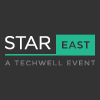 |
Influencing Stakeholders Using Fact-based Information
Slideshow
With all the open source tools available on the market it can be overwhelming as to which ones might meet your needs and which ones will work best in your environment to create a high performing team and metrics dashboard. Join Jennifer as she explains the relationship of data, your environment, and how a hub and spoke model can link all your different data sets and tools together. She identifies opportunities for applying test data analytics across the engineering and test landscape, ranging from high-value test cases to dynamically generated regression test suites. She will review ways to collaborate and show results in a way that clearly demonstrates progress and how to present a visual metrics dashboard to your leadership and stakeholders in the organization. |
Jennifer Bonine
|
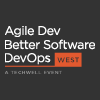 |
Waterfall to Scrum: It Only Goes Up from Here
Slideshow
You’re a project manager using a waterfall methodology, but the team is not making progress on the work and deadlines are not being met. The requirements aren’t clear, scope keeps changing, deadlines won’t budge, and you can’t get more resources on the project. You were doomed from the start! A common solution to this situation is to adopt Scrum, but that can be difficult as well. Join Toiya Jones-Current as she narrates her personal journey and the baby steps she took to successfully switch from waterfall to Scrum and the transition her project team went through to deliver iteratively and consistently. You'll take back valuable insights into how to keep your team focused on delivering the highest business value every sprint and release. You’ll also explore facilitation techniques to help your team improve its communication and calibration with stakeholders. |
Toiya Jones-Current
|
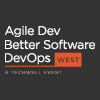 |
I, Project Manager: Meet the Future of AI Software Delivery
Slideshow
[video:https://www.youtube.com/watch?v=nIuO9-eODZs&feature=youtu.be width:300 height:200 align:right] |
Rachel Burger
|
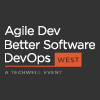 |
Engineering Productivity and Enterprise Quality at Scale
Slideshow
Over the past two years, PayPal has been on a journey to modernize its internal development and test systems, from test environments, implementing enterprise continuous integration and code propagation into the development pipeline, to release processes and production code validation. Jose Buraschi and Nir Szilagyi will talk about transforming the code of 5,000 developers across 350 teams and how it required social “magic” to influence behaviors and motivate engagement. This modernization of PayPal's development practices has involved creating reliable integrated test environments, continuous integration, automated code propagation, and automated validation before each deployment. Instead of asking for a list of things developers need to do differently, Jose and Nir asked for simple changes that, through side effects, led to the desired results. |
Nir Szilagyi
|
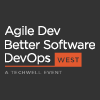 |
Things Are Broken: A Case Study In Moving Too Fast
Slideshow
"Move fast and break things” tells quite a story of the relationship between speed and agile. Speed has been a driver in our industry before it was even an industry. Books promise that certain frameworks can deliver twice as much in half the time, yet teams still struggle delivering what's expected of them. This session describes a six-month case study of a multi-team transformation. The orders were to make the teams deliver faster, but they were consistently missing deadlines. Frustration was on the rise. Only after taking the time to understand what they meant by "faster" could the teams improve—and the solution ended up being to slow down. Chris Murman will help you learn how to make the case to slow down, work in increments, deliver frequently, and delight customers. He will explain which metrics to use to measure progress, patterns of successful teams, and the necessary coaching stances. |
Chris Murman
|
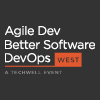 |
Innovation: The Art of Being Wrong
Slideshow
[video:https://youtu.be/S_fDFUC4ISY width:300 height:200 align:right] |
Stefana Saxton
|
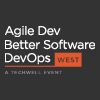 |
Faster Food and a Better Place to Sleep: Applying Agile Outside Software
Slideshow
Agile methods aren’t just for software anymore—actually, they haven’t been for quite a while. Agile's collaborative, iterative, incremental approaches to work have caused it to go mainstream. But can we apply team-based agile straight out of the box in a nonsoftware context? Although most of the principles and patterns apply, sometimes the practices and frameworks need modification for a particular context. Mike Cottmeyer will explore two case studies of agile journeys: an international hotel chain going through a major rebranding initiative, and a well-known fast food restaurant looking to optimize its kitchen production capacity. These are two totally different companies in two totally different industries, both trying to use agile to solve their problems. We’ll look at the challenges each faced, what they had in common, and the patterns, tools, and techniques they are using. |
Mike Cottmeyer
|


